When it comes to the best free dispersed camping destination in the Midwest, the state of Michigan – “The Great Lake State” – is undoubtedly one of the best.
Thick woodlands, endless National and State forests, as well the breathtaking shores of the Great Lakes turn dispersed camping in Michigan into a truly unforgettable experience.
Although it’s true that this state is not the first thing that comes to people’s minds when someone mentions camping or hiking, a lot of outdoor enthusiasts end up surprised by the sheer number of places in Michigan where one can pitch a tent and enjoy the breathtaking wilderness.
However, before setting out on your Michigan dispersed camping adventure, you’ll want to equip yourself with some good background information. And if that’s what you’re currently looking for, you’re in the right place.
In this article, I’ll be taking a detailed look at the 9 best dispersed camping areas in the U.S. state of Michigan. I’ll provide all the relevant intel: what you can expect at these places, how you can get to them, as well as how to navigate their various rules.
In addition, I will also provide some general advice on this type of outdoor activity – where is dispersed camping allowed, what you should pack for it, and other important considerations.
Map of Dispersed Camping Areas in Michigan
You can easily find the locations of the best dispersed campgrounds in the state using this map.
Overview
In the next few sections of this guide, you will find all the vital information needed to understand the regulations concerning dispersed camping in the Great Lake State.
This will include where you are allowed to pitch your tent and how to find these areas. I’ll also take a quick look at some additional rules and give you advice on what you should pack for your trip and how you should behave in the dispersed camping area of your choice.
Where in Michigan is Dispersed Camping Allowed?
In Michigan, one can freely engage in dispersed camping on any public land that is supervised by the USFS – United States Forest Service. On these lands, dispersed camping is broadly allowed, with the exception of areas where this kind of activity is explicitly forbidden.
To put it simply, you can freely pitch your tent in any of the three National Forests located in this U.S. state (I’ll talk more about these below).
You can either contact the Ranger District Office responsible for the area you’re planning to spend time in and inquire with them directly or simply find a nice camping spot on your own by driving along the Forest Service roads in these zones.
Besides these USFS-managed lands, there is also a network of State Forests in Michigan, and dispersed camping is allowed in these as well. However, the rules for pitching a tent in these forests are somewhat different than the ones concerning the aforementioned Forest Service lands.
I will provide some additional information on Michigan State Forests and dispersed camping you can do in them down below.
Dispersed Camping in the Forests of Michigan
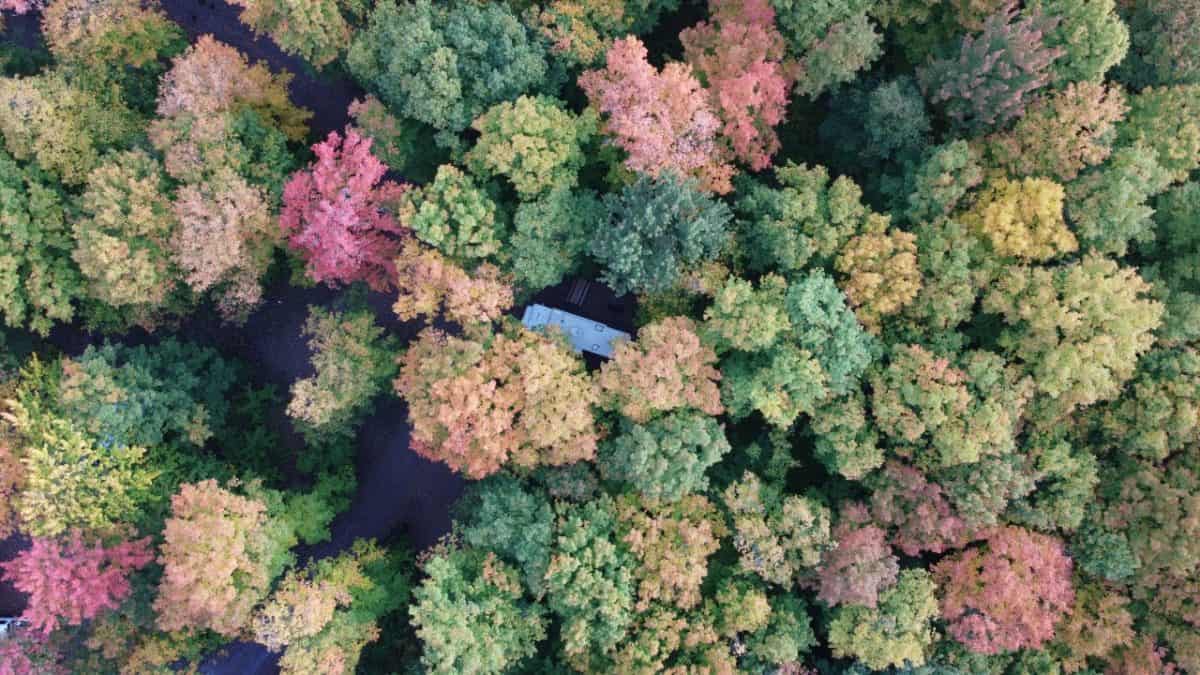
Dispersed Camping in Michigan National Forests
There are three National Forests in Michigan that are supervised by the United States Forest Service. One of these is located on the state’s Lower Peninsula (Huron-Manistee) and the other two are situated on the Upper Peninsula (Ottawa and Hiawatha).
The one that is located on the Lower Peninsula of Michigan – Huron-Manistee – is actually not contiguous. As its name suggests, it is comprised of two separate forests. The Manistee National Forest is located in western Michigan, while the Huron Forest can be found in the eastern part of the state.
In my opinion, those wishing to engage in dispersed camping in the state of Michigan should prioritize these National Forests above other areas. Speaking generally, all three of these forests have regulations and rules that are quite similar and they all allow some form of dispersed camping.
However, the rules do vary a bit from one National Forest to another, which is precisely why I recommend doing a bit of online research before actually heading to any of these places. You can, of course, also contact the local field offices for the most up-to-date info.
Here’s a list of National Forests in Michigan, together with links to guidelines regarding dispersed camping in each of these forests:
Huron-Manistee National Forest
Dispersed Camping in Michigan State Forests
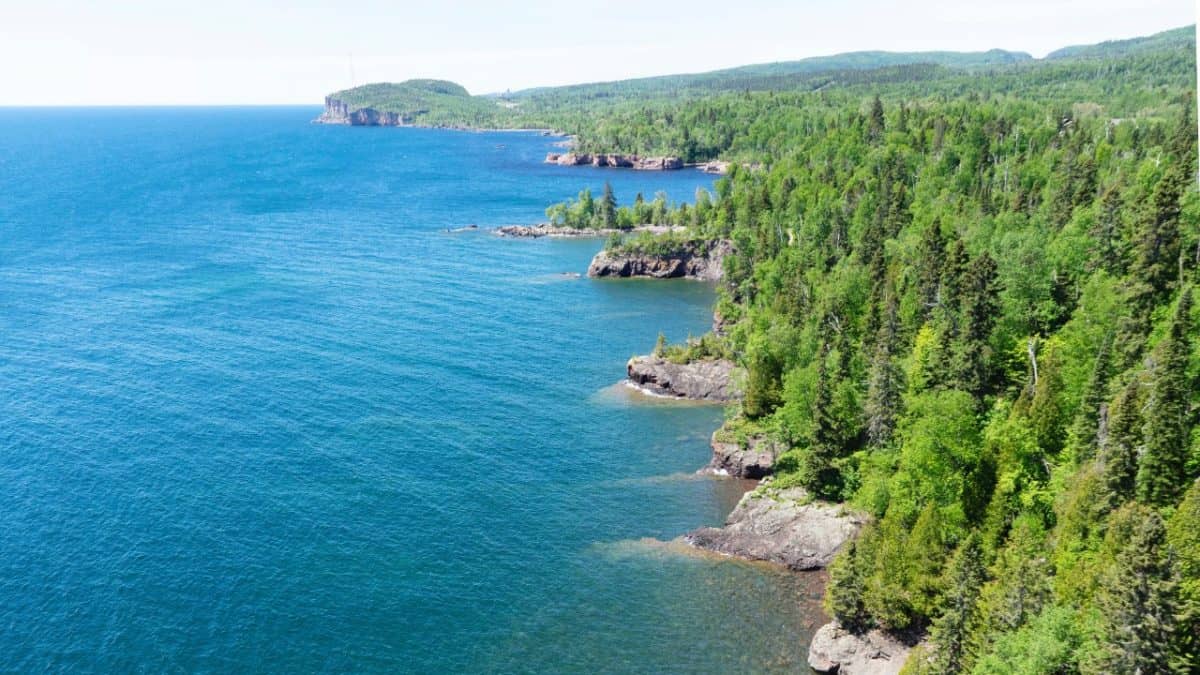
Besides the National Forests mentioned above, Michigan also has State Forests. There are six of them in total and all are supervised by the DNR (Department of Natural Resources for Michigan).
These forests are, in my opinion, a collection of genuine hidden gems for campers, and, fortunately, all of them allow various forms of dispersed camping.
The State Forests are located throughout Michigan and include the following:
- Au Sable State Forest
- Pere Marquette State Forest
- Mackinaw State Forest
- Lake Superior State Forest
- Escanaba State Forest
- Copper Country State Forest
Those wishing to pitch their tents in one of these forests are required to follow these rules:
- At your campsite, you have to post a camp registration card (I’ll provide more info on this later)
- It goes without saying, but pitching a tent in areas with “No Camping” signs is not allowed
- You cannot set up your campsite within a 1-mile radius of a rustic state forest campground
- You cannot set up your campsite in a game area, recreation area, or a State Park
- You have to follow all of the State Land Rules
If you need a tent recommendation, check out our Coleman tent review.
Camp Registration Card for Dispersed Camping in Michigan
As I’ve said above, camping in one of the State Forests of Michigan cannot be done without a camp registration card. What is more, this card has to be prominently posted at your campsite as long as you’re staying in it.
Fortunately, this is a very simple form to fill out. You will, however, have to fill it out in advance, print it, and then take it with you to the campsite, where you’ll have to post it in a visible spot. You can download the camp registration card on this website.
How Do I Find Dispersed Camping Areas in Michigan?
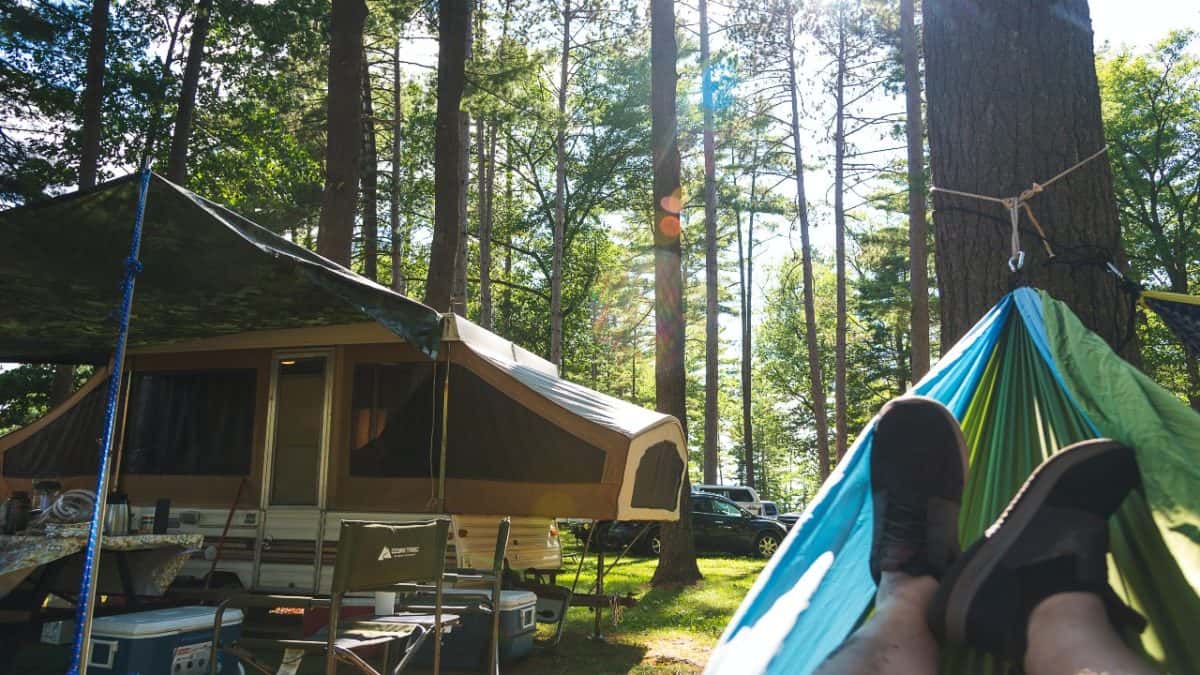
Speaking generally, those who know how to read USFS maps, have some experience in navigating woodland roads, as well as the gut feeling of “knowing where to look” should have no trouble with finding a myriad of dispersed campsites in the Great Lake State.
The fact that Michigan isn’t even as nearly as popular as the western states when it comes to dispersed camping is actually a good thing. In the aforementioned State and National Forests of Michigan, you will find far fewer campers than you would in the Rockies.
For finding dispersed camping areas in Michigan, I would recommend using a combination of USFS maps, online websites, and smartphone apps. Here are some of my favorite resources for finding amazing camping spots in this part of the United States:
- Campendium – An app and a website, Campendium lets outdoor enthusiasts check out user reviews for hundreds of camping areas everywhere across the country.
- The Dyrt – This app, on the other hand, will allow you to easily find free campsites in Michigan by using the integrated filter. You can also download the maps on your phone, although you’ll have to buy the Pro version for that.
- Freecampsites.net – This simple website is my go-to resource when it comes to finding free camping zones in the United States. Using it is as simple as entering your destination and filtering the provided results.
Although it’s true that these websites and apps can serve as a good starting point for folks who are new to dispersed camping, I still think that you should never use them on their own.
In other words, always try to cross-reference the info provided by these websites and apps with the official maps and other resources supplied by the public agencies.
Here I have to mention one particularly amazing (and official) resource for finding great camping spots in the State Forests of Michigan. This would be the State Forest Map, supplied by the Department of Natural Resources for Michigan.
On this excellent interactive map, you’ll be able to quickly and easily find zones that allow dispersed camping. You will also be able to see all rustic state forest campgrounds as well as the boundaries of the State Forests. Don’t forget – pitching a tent within a 1-mile radius of a rustic state forest campground is not allowed.
There is one more official resource for finding Michigan’s best areas for dispersed camping. Besides the interactive online map mentioned above, you can also use the MVUMs – motor vehicle use maps – supplied by the United States Forest Service.
As their name suggests, these maps won’t really help you with determining where you can and where you can’t pitch your tent. They will, however, help you navigate a plethora of Forest Service roads running through Michigan’s National Forests.
Of course, you can always combine these with the aforementioned camping apps and Google Maps to find a camping area that suits your needs the best. Here are the links to the relevant motor vehicle use maps:
- MVUM for the Ottawa National Forest
- MVUM for the Hiawatha National Forest
- MVUM for the Huron-Manistee National Forest
Regulations and Rules Concerning Michigan Dispersed Camping
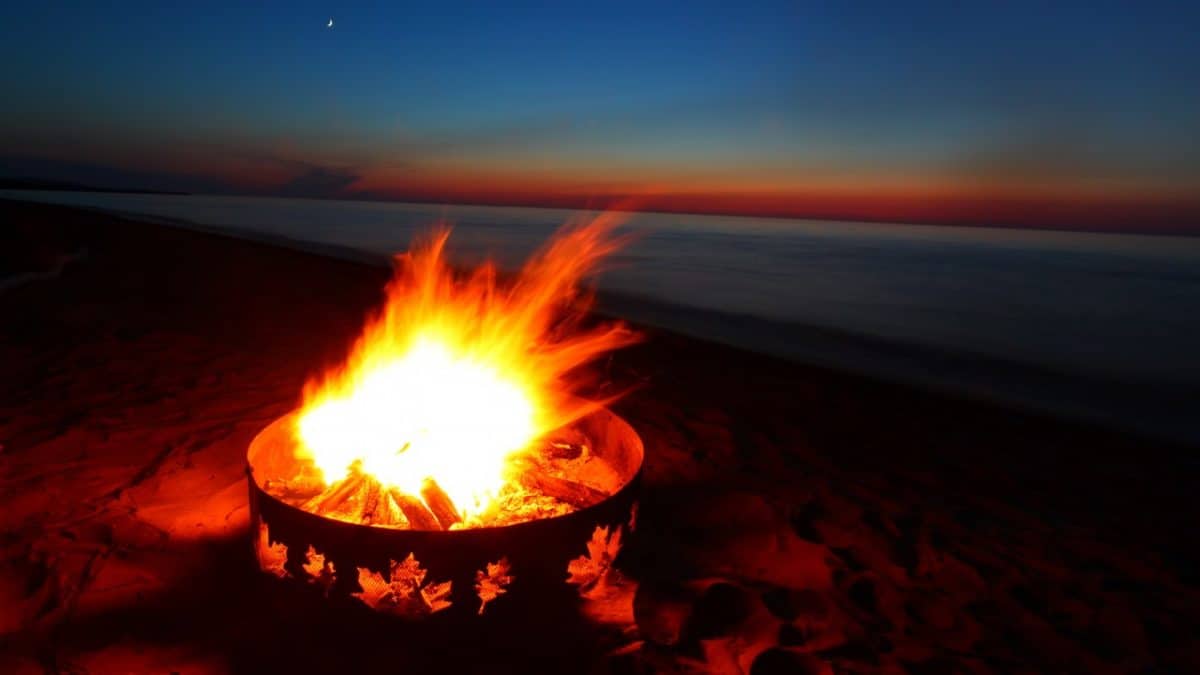
The best thing about dispersed camping is undoubtedly the fact that it can be done without things that usually go hand in hand with pitching a tent on a developed campground. In other words, there is no need for reservations, permits, fees, and similar requirements.
However, that doesn’t necessarily mean that there are no rules at all. For example, you can’t camp for more than two weeks during a 1-month period. You also cannot camp near developed campgrounds, picnic areas, or trailheads.
While the best course of action is to just contact the local field office and find out everything about the regulations concerning the particular area you’re planning to camp in, here are some general rules you should always follow while engaging in this activity:
- Responsible camping – Always pick a spot without too much vegetation and keep your campsite reasonably small. While pitching a tent, do not build any kind of platform for it or dig trenches.
When it comes to washing your clothes and other stuff, always do it at least 200 feet away from wetlands, lakes, streams, and rivers. Use only plain water and biodegradable soap.
- Answering nature’s call – Whenever you feel like answering nature’s call, do it as far away from the aforementioned water sources as possible. Dig a hole, do your “business”, and then bury the waste.
Items like used toilet paper always need to be packed out. This is because animals usually dig these things up and scatter them throughout the wilderness.
- Fire safety – Just like the campsites themselves, campfires need to be kept small. Instead of using firewood brought from another region – which can introduce invasive pests to the area – use locally purchased firewood.
If there’s a fire ring at your camping spot, use it. But, before lighting your campfire, make sure you have a bucket of water ready and available. More importantly, never leave your fire unattended.
- Keeping forest creatures wild – Being interested in local wildlife is a completely normal thing. However, you should avoid following or approaching these animals. Only observe them from an appropriate distance.
Store your food and water securely and safely. Make sure that it’s out of reach of wild animals and never try feeding these critters with your rations. To keep both your dog and the forest creatures safe, leash it.
- Invasive weeds – When introduced to a particular area, invasive weeds can and will replace the native weeds. It goes without saying, but this can have a catastrophic effect on the animals who feed on native plant species.
For that matter, it’s very important that you do your best and not spread invasive weeds while camping in Michigan. Do not bring flowers that could spread seeds and make sure to wash your vehicle – particularly the tires – before going there.
- Archeological traces – Disturbing sacred, historical, and archeological sites means destroying traces that hold clues to the country’s past. Keep in mind that doing something like that is illegal and can lead to considerable penalties.
That’s why it’s very important to leave archeological traces alone and report all illegal activities you notice while camping. You can do this by immediately contacting the nearest district ranger.
- Being considerate of other campers – Protect the quality of other people’s outdoor experience by being courteous and respecting them. Do not camp on trails and always help other campers in need.
Also, don’t be loud – let nature’s sounds prevail. Do not produce unnecessary noise and ruin other people’s camping experience in that way.
What Should I Pack for Dispersed Camping in Michigan?
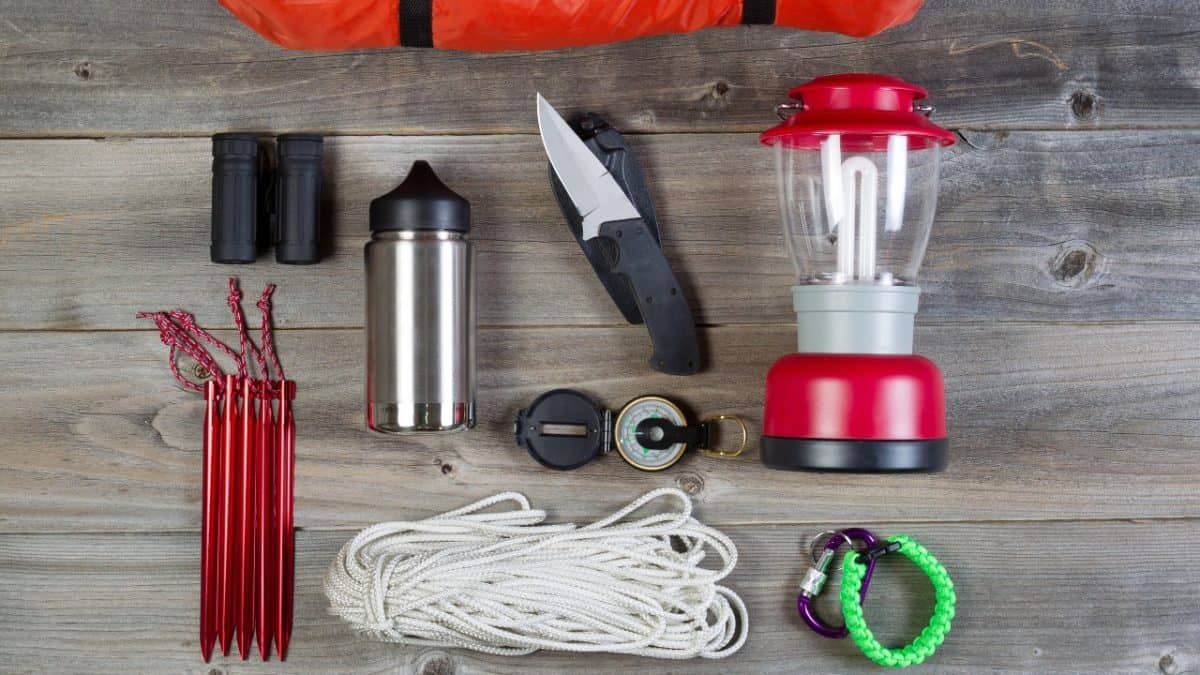
Like all other outdoor activities, dispersed camping – whether it’s done in Michigan or anywhere else – requires the use of proper gear. I’m pretty sure you already have the basics, like the tent or sleeping bag, but here are some other items you may want to consider packing:
- Water containers – None of the dispersed camping areas listed in this guide have access to reliable water sources. For that matter, you’ll have to bring plenty of clean water with you in portable containers. If you need a water bottle, I recommend checking out Hydro Flask or one of bottles from this list of the best Hydro Flask alternatives.
- Water filter – Sometimes, this simple yet extremely convenient device can literally save your life. While it’s always preferable to just drink water you’ve brought with you, pack one of these as well – you never know what may happen.
- Camping stove – What good is a peaceful nature ambiance if you’re hungry? While simple camping snacks can certainly do the trick, I would recommend bringing a portable stove to turn your camping adventure into a truly unforgettable experience.
- Portable toilet – Digging holes to “answer the call of nature” is one way to go about this thing. Another is to pack a portable camping toilet – it’s a comfortable, clean, and private solution.
- Cooler – To keep your water and favorite drinks fresh and cool, make sure to pack a portable cooler as well. These simple appliances are extremely convenient and easy to transport in a car/trailer.
- Bug spray – Finally, don’t forget to bring a quality bug spray. With one of these, you’ll never have to worry about clouds of pesky mosquitoes ruining your dispersed camping experience.
Read our post on wild camping essentials and checklist for more information.
The Best Areas for Dispersed Camping in Michigan
Hovey Lake Dispersed Campground
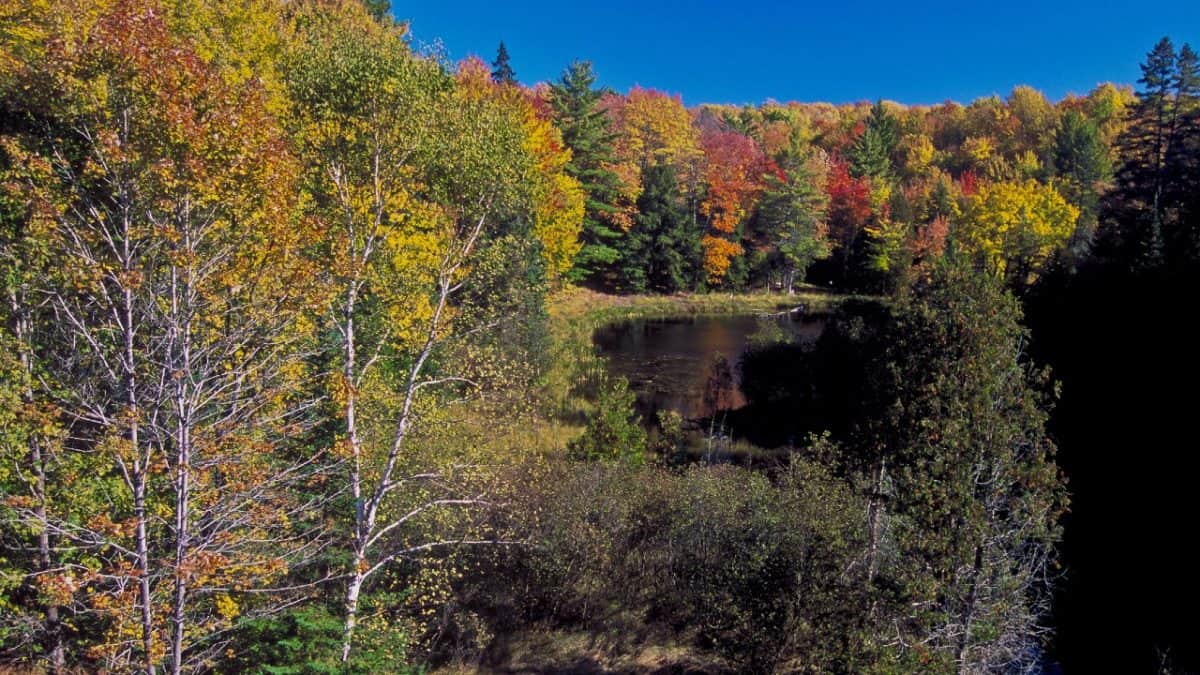
- Crowds: Moderate
- Water: No
- Restrooms: Vault toilets
First Michigan dispersed camping area I’ll be taking a look at is the Hovey Lake Dispersed Campground. This place is situated in the state’s Upper Peninsula, more precisely in the Hiawatha National Forest.
Although this isn’t a dispersed camping area in the true sense of that term, its sites are both well-spaced out and completely free to camp at. The feeling of being “deep in nature” is definitely there, since you’ll be quite secluded while spending time at Hovey Lake.
While the lake itself looks absolutely breathtaking, you should avoid swimming in it – it’s quite murky and somewhat shallow. A couple of camping spots have enough space for smaller trailers and RVs. There is, however, no room for larger rigs.
Even though it’s a designated camping area, the amenities at Hovey Lake are minimal. There are vault toilets, but no reliable water sources or trash removal services. For that matter, make sure to practice the “leave no trace” principles while spending time there.
Green Road / Nordhouse Dunes
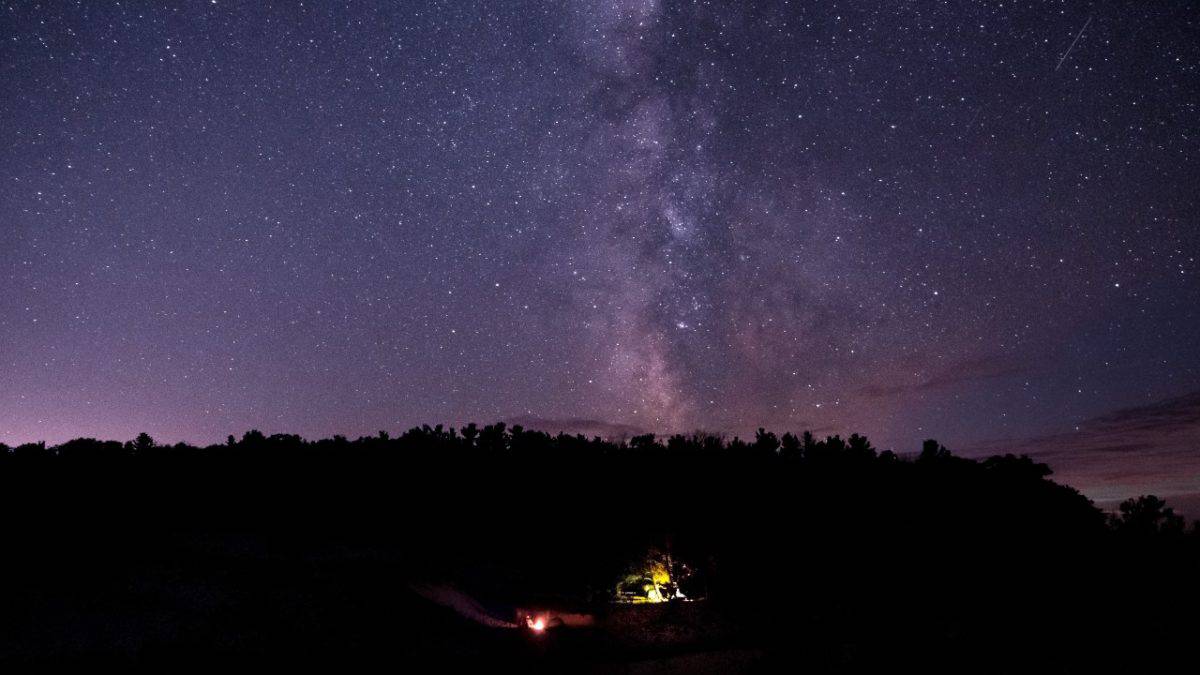
- Crowds: Moderate
- Water: No
- Restrooms: No
Located in the aforementioned Huron-Manistee National Forest, more precisely within the Nordhouse Dunes Wilderness Area, the Green Road has received numerous positive reviews over the last few decades.
This is mostly due to the fact that it’s very close to the stunning Lake Michigan, but also because it’s very easy to access (you can reach it with a regular passenger vehicle) and due to the privacy of its sites. To camp inside the Nordhouse Dunes zone, you will have to pay a small fee, which is, in my opinion, a trivial price to pay for accessing such a gorgeous area.
Here, you’ll find no water sources or restroom facilities of any kind. There are, however, vault toilets at a few trailheads situated in the area. The Nordhouse Dunes themselves are very close to the campsites and make for an ideal day hike – you’ll be able to marvel at their unique look and enjoy the ambiance of the lakeshore.
The dispersed camping sites located along the Green Road vary from roomy and secluded areas to simple pull-outs next to the road itself. And even though you should have no trouble driving down this road in your regular passenger car, keep in mind that turning around in a larger vehicle may be a bit difficult.
French Farm Lake
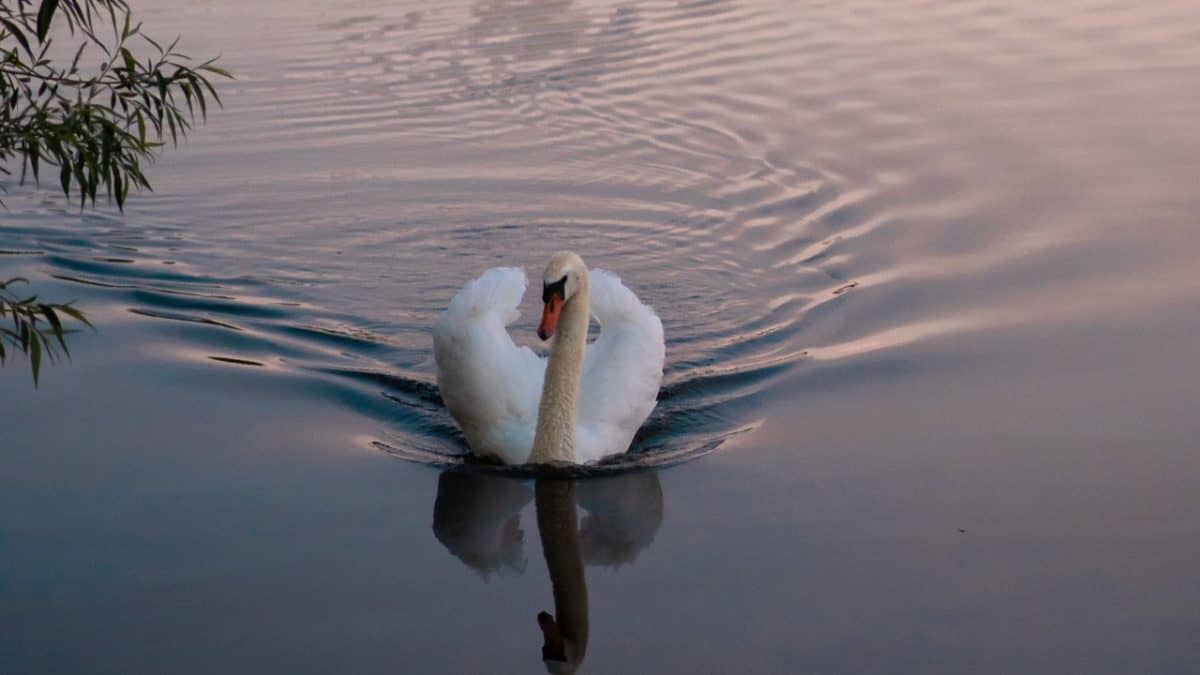
- Crowds: Busy
- Water: No
- Restrooms: No
Behind this peculiar name hides a dispersed camping area that is situated just outside Mackinaw City, on the northern tip of Michigan’s Lower Penninsula. Here, you will find six designated camping spots in total, all of which function on a first-come, first-served basis.
While the number of camping spots may seem small, keep in mind that all of them are very roomy – you’ll have no trouble parking your large rig here. They offer a lot of privacy and easily accommodate different variants of camping set-ups.
This particular dispersed camping zone can be found right next to the road that leads to the French Farm Lake mentioned above. Both the beach and the International Dark Sky Park are very close, which turns this area into a phenomenal choice for campers interested in stargazing.
Unfortunately, however, there are no amenities of any kind at French Farm Lake, which means that you’ll have to come here fully prepared. The fact that it has no restrooms or water access doesn’t stop people from coming here, though – in fact, the area is often quite busy. If you’re planning to camp here on a summer weekend, it’s very important that you arrive a few days in advance.
Marzinski Horse Trail Camp
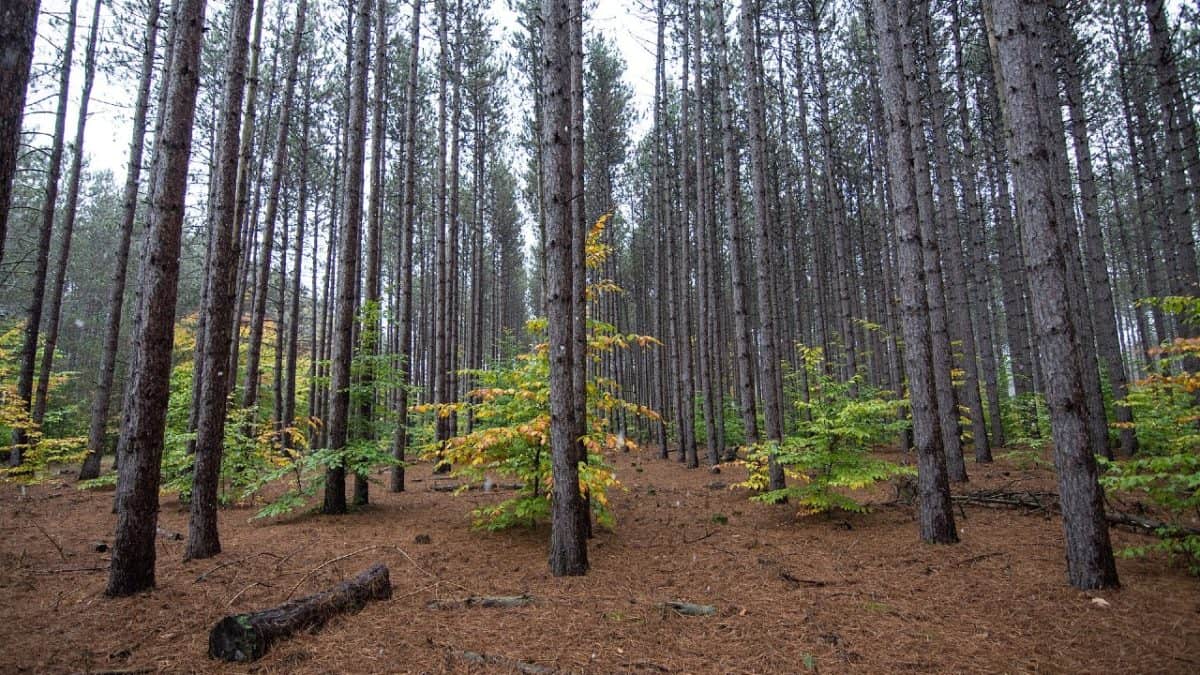
- Crowds: Moderate
- Water: No
- Restrooms: Vault toilets
The next area on my list is one that has all the attributes of amazing dispersed camping in this part of the United States. There are a plethora of activities to participate in, accessing the zone is as easy as it gets, and its campsites are well spread out.
Also, due to the fact that it’s situated in the Huron-Manistee National Forest, this place is not only very close to the Marzinski Horse Trail but also to Lake Michigan. Given its location, it’s an absolutely amazing area to camp in, whether you’re interested in horse riding or not.
Here, you will find about 20 dispersed campsites in total. One particularly great thing about this zone is that it’s rarely crowded, even in the middle of summer. In addition, there’s a beautiful beach on Lake Michigan and the town of Manistee is only 8 miles away.
While it doesn’t have any reliable water sources, the Marzinski Horse Trail Camp has vault toilets. Bring as much water with you as you can and make sure to respect the “leave no trace” principles while camping there.
Lake Perrault Dispersed Campground
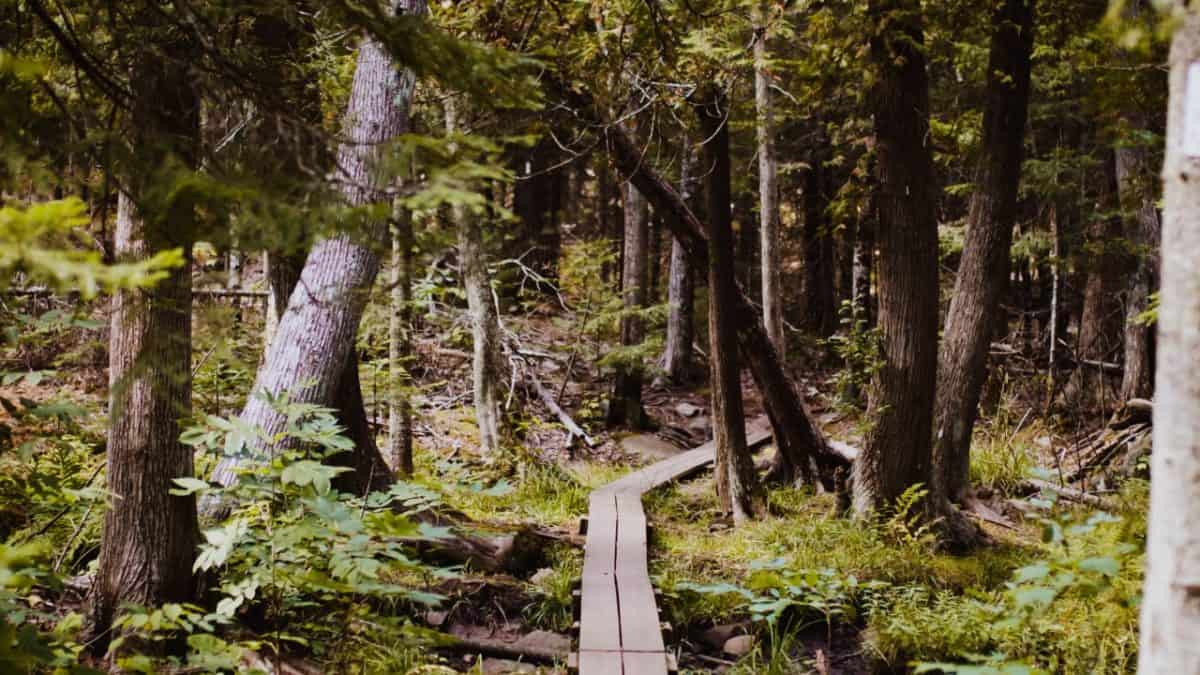
- Crowds: Busy
- Water: No
- Restrooms: No
In the northernmost part of Michigan’s Upper Peninsula, you will find the Keweenaw Peninsula, and on it, the charming Lake Perrault. There’s enough room here for at least 7 groups of campers and the area is located just off the highway – easy access is guaranteed.
However, keep in mind that you’re probably going to have a difficult time turning your large rig here. In other words, this particular campground is not the best choice for folks with larger RVs. If you don’t have a regular passenger vehicle, just rent one – you don’t want to miss out on the beauty of this place.
Besides the fact that it’s a great place to camp on its own, Lake Perrault Dispersed Campground is also close to the Baraga State Forest Area and the town of Houghton. There are no amenities of any kind here, though, so you’ll want to come well-prepared.
Another thing worth pointing out is that this zone is very popular. If you want to get a nice camping spot here on a summer weekend, you’ll have to arrive a few days in advance. And if you don’t make it in time, just head over to the adjacent Ottawa National Forest – you’re bound to find some excellent dispersed campsites there.
Haymeadow Creek
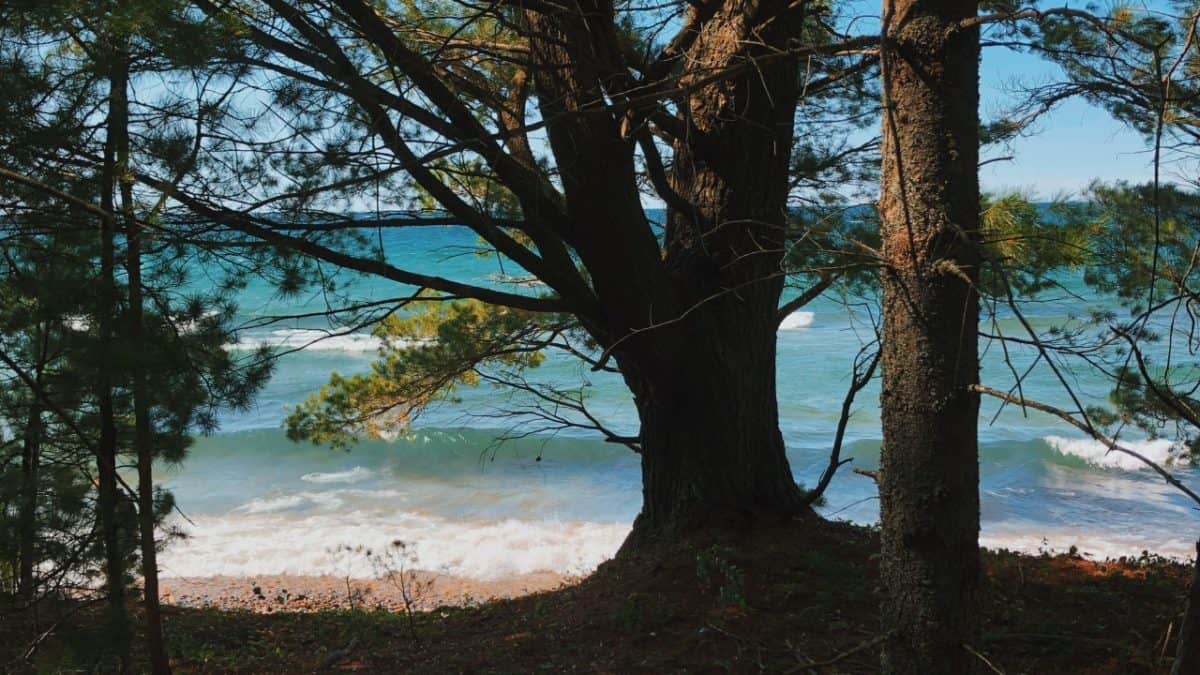
- Crowds: Moderate
- Water: No
- Restrooms: Vault toilets
Located deep within Michigan’s most breathtaking National Forest – Hiawatha – the Haymeadow Creek is actually a formal campground. However, this shouldn’t stop you from paying a visit to it, as there’s a myriad of dispersed camping spots in its vicinity.
This is a particularly great option if you’re looking for a camping area with some amenities. While it doesn’t have a reliable water source, Haymeadow Creek has picnic tables and vault toilets.
Just like in the case of almost all other Upper Peninsula camping areas, you will want to come to this place well-prepared. One thing you’re definitely going to be dealing with here is mosquitoes. Keep these pests at bay by getting a campfire going as soon as you get there and make sure to pack a quality bug spray.
Since there is no trash service here, it’s very important that you pack out all of your waste before leaving Haymeadow Creek. Give your best to leave the camping spot in the exact state you found it.
Whelan Lake
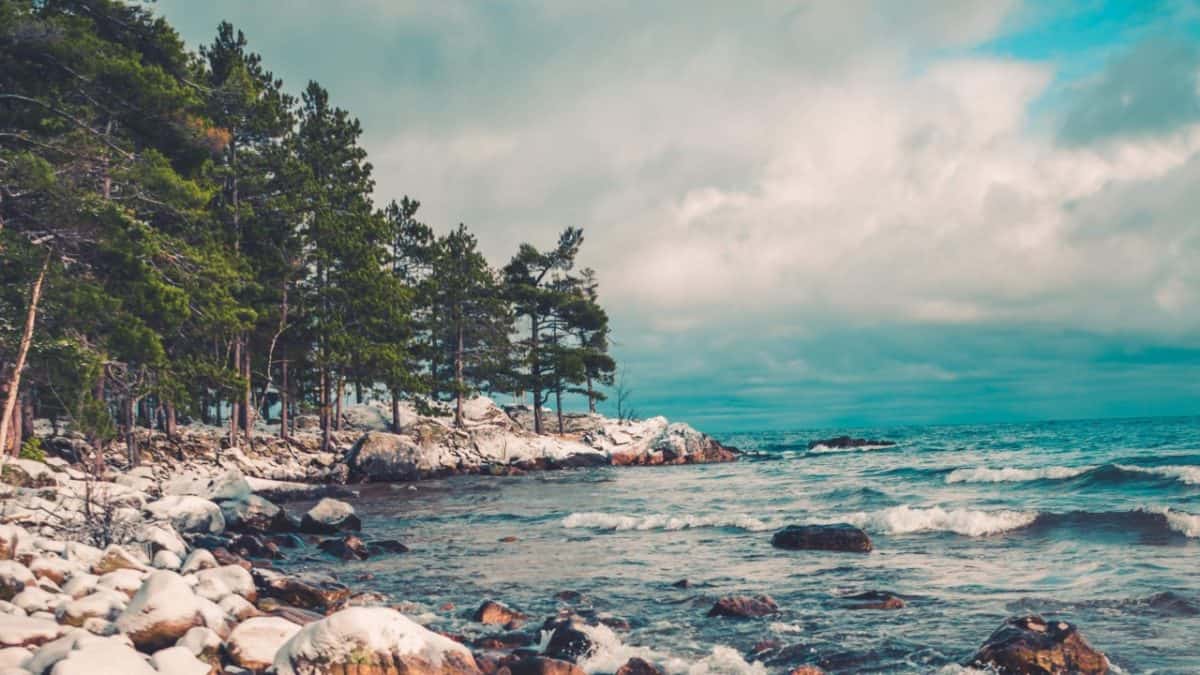
- Crowds: Busy
- Water: No
- Restrooms: No
Located in west-central Michigan, in the Manistee National Forest, Whelan Lake offers primitive dispersed camping. If you’ve always wanted to explore the not-so-well-known areas of this state, this is a phenomenal destination and one that’s open year-round.
The lake itself is an exceptionally popular fishing destination, while the Pere Marquette River – which is only 700 ft away from the lake – offers additional recreational opportunities. The camping spots themselves are located everywhere around the lake.
To the west, you’ll find some picturesque Lake Michigan beaches, as well as the charming town of Ludington. An important thing to mention here is that there are no vault toilets at Whelan Lake, even though the USFS website claims that there are some.
A lot of campers report that Google Maps is not correctly routing outdoor enthusiasts here, so reaching Whelan Lake can be quite challenging. To make sure you’re taking the correct route to this lovely place, I would recommend using Google Maps together with the official USFS map for the area.
McKinley Trail Camp
- Crowds: Busy
- Water: No
- Restrooms: Vault toilets
The McKinley Trail Camp is one of the best options for folks looking to spend some time in the magnificent Huron National Forest. The best way to explore this area is by horse – just like in the case of the aforementioned Marzinski Trail Camp – but you can engage in regular camping here as well.
While this is not a genuine dispersed camping area, it provides outdoor enthusiasts with a feeling of solitude with its well-spaced camping spots. It goes without saying, but pitching a tent here is completely free as well.
What is more, there’s a lot of exploration to be done here. While camping at the McKinley Trail Camp, you’ll be able to visit the Shore to Shore Horse Trail and the Au Sable River. You can also hop in your car and have a day trip to Lake Huron.
Unfortunately, there is no drinking water here, so make sure to bring some with you. There are, however, vault toilets and a few established fire rings – always a big plus in my book!
For more camping opportunities in this part of the US, check out our guide to camping in Indiana Dunes.
Robbins Pond Dispersed Campsite
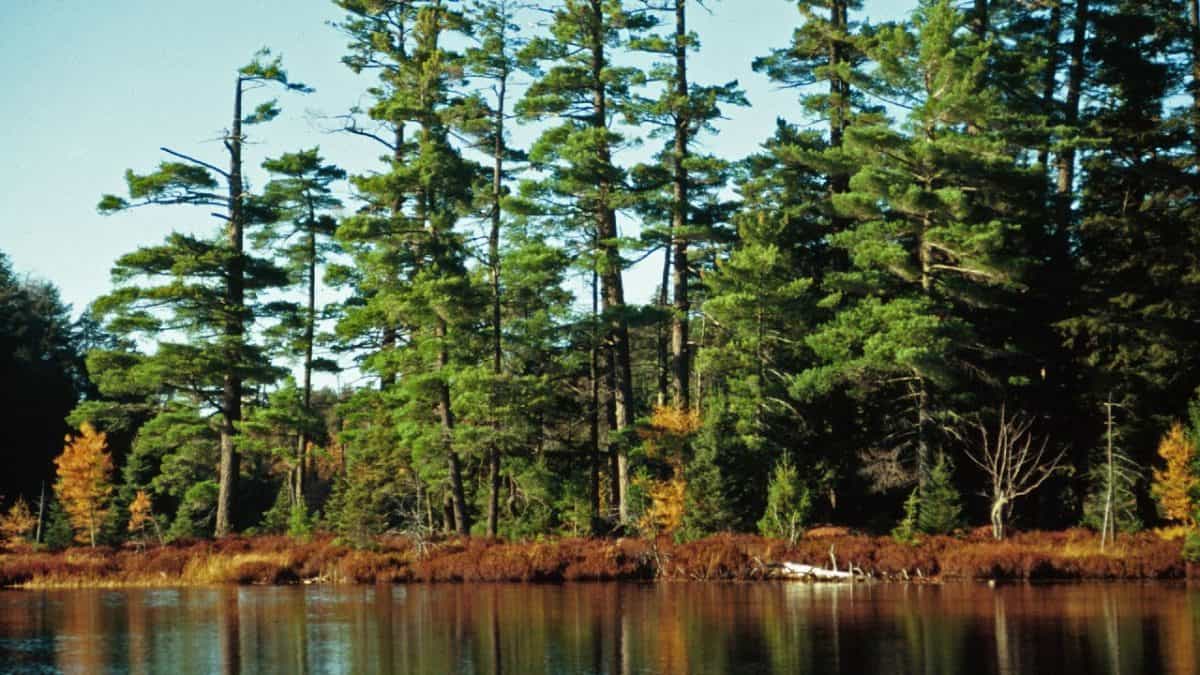
- Crowds: Light
- Water: No
- Restrooms: Vault toilets
The very last Michigan dispersed camping area on my list is the Robbins Pond, which stands as a phenomenal choice for campers looking for something a bit more secluded. Situated just north of the Michigan-Wisconsin border, in the Ottawa National Forest, this place has only three campsites in total.
It is, however, an absolutely beautiful area to pitch your tent in. You’ll be right next to the Robbins Pond itself and there’ll be nothing but miles of wonderful nature in every direction.
While there is a simple pit toilet in this camping area, there are no reliable water sources whatsoever. You will, therefore, have to bring your own water. I would recommend packing a quality bug spray as well – a lot of people who have been here reported that mosquitoes can get pretty bad.
Besides the fact that it’s quite secluded, another great thing about Robbins Pond is that it makes a good stop on a longer dispersed camping adventure. You can easily string this place together with some other Upper Peninsula dispersed campsites mentioned in this article.
Let me know in the comments below if I have missed any great spots or if anything needs updating.

I love hiking, backpacking, and camping. From the Camino de Santiago to the West Highland Way in Scotland or simply a great day hike on the weekend. Hiking refreshes me, my mind, and keeps my body reasonably fit. So far I have walked three Camino routes and many other long distance hikes in the UK, Canada, and around the rest of Europe. One of the best was my hike up Ben Nevis.

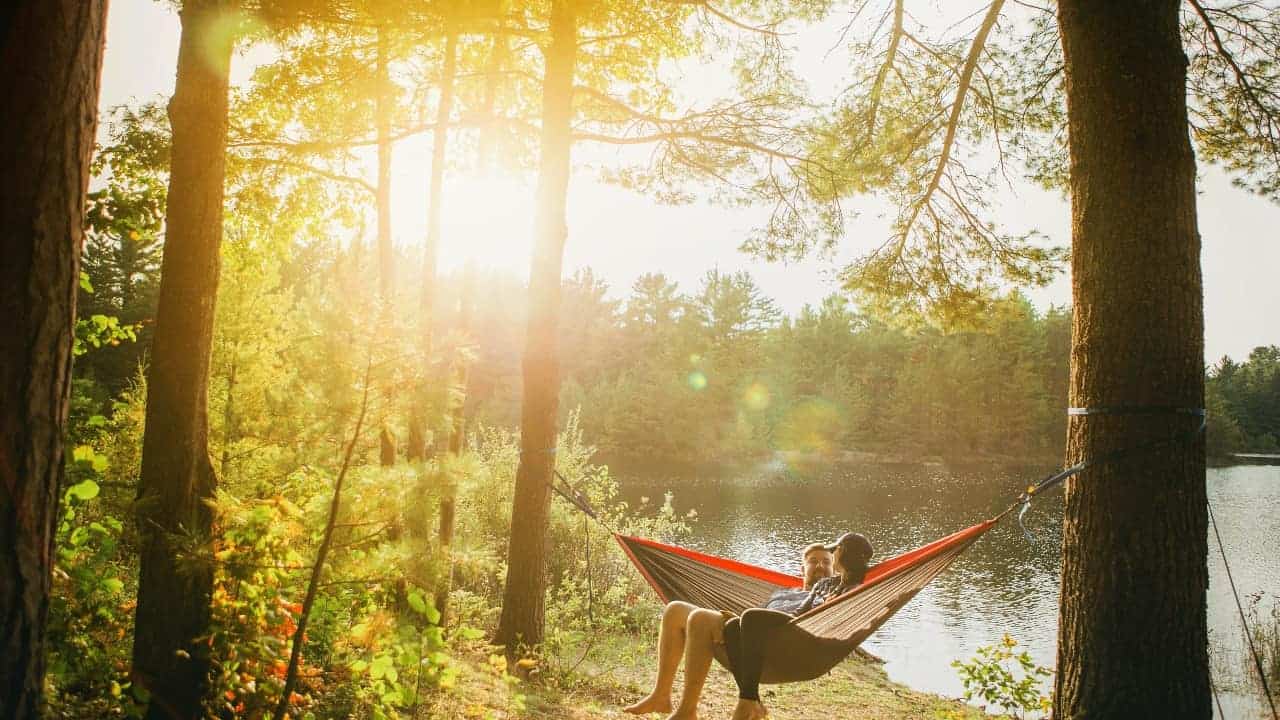
Leslie Michigan also has some great camping opportunities on its offshore Islands. In Lake Michigan are the Manitou Islands reachable by boat from Leland. The best of course is Isle Royale in Lake Superior.